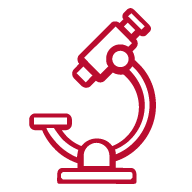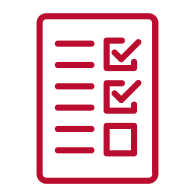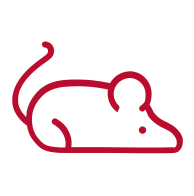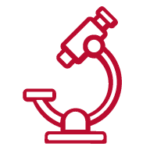A faculty member transferring research to WashU can be a lengthy, nuanced process. As early as possible, begin the process of working with the faculty member’s outgoing institution to gather information. Identify key contacts (department and central staff) at the PI’s outgoing institution who can assist in the transition.
Review the faculty guidance and direct the faculty member and current research administrative staff to complete the steps listed. Maintaining communication with the PI, outgoing institution’s department and central research administration staff is key to a smooth transfer.
There is not one comprehensive set of steps or timeline for an incoming faculty member. Each PI, outgoing institution, and project will require a unique set of tasks. This page covers broad topics to begin the process. It is not a complete roadmap.

Initial Onboarding
In addition to completing the general HR checklist and welcome information, there are additional tasks and considerations for research faculty beginning a role at WashU.
Consult with your manager to determine which partners in your department will be responsible for key onboarding tasks, including:
- You may need to request copy of PI’s offer letter to ensure the Payroll Costing Allocation (PCA) is accurately completed (salary, fringes, etc.)
- Confirm level of institutional discretionary funds for transfer and start-up activities (Budget restrictions, timing, etc.)
- Send a welcome email (sample letter available) that includes
- Key contacts
-
- Key links
- Establish relocation expense funds as needed

Set up Early Hire appointment in Workday
If the PI plans to complete training requirements or submit proposals before the start date, set the individual up in Workday as a Contingent Worker with a profile of Academic Services Access. This role allows access to key systems including Workday, RMS, and Learn@Work.
On the actual start date, use the Convert Contingent Worker process to move the individual to an Employee. At this time, submit a ServiceNow request for an FFR Owner and Assignee worktags. Links to catalog items are available on Workday’s Request Support page.
Resources

Facilities & Equipment
Determine facilities and space assignment. The process for this varies by campus, school, etc. Consider:
- Office space for faculty and other personnel
- Lab location, size, etc.
- Specialty equipment needs
- Evaluate facility needs to support equipment and installation (e.g. power supply, alarm systems).
Submit the Equipment Transfer In form to Property Accounting propertyaccounting@wustl.edu.

Transferring Sponsored Research
When PIs transfer research from another institution, WashU must become the official recipient of the award(s) from the sponsor.
At times there is a disconnect between what the faculty member assumes will transfer and which awards the outgoing institution relinquishes. Request written confirmation of which awards will transfer to WashU. Then you can begin the formal process of transferring the award(s). You may use the Transferring PI Workbook. This gathers information for each award, personnel that are transferring, and equipment.
If any of the sponsored funds are contracts, they will likely need to be renegotiated. Contact JROC early to begin this process.
Request Documentation
Early in the process, gather documentation from the PI’s outgoing institution. For each award, request:
- Relinquishment statement/letter (Formal documentation that an award is being relinquished by the outgoing institution)
- Copies of NOAs or contracts that will transfer
- Copies of submitted applications for transferring projects
- Completed objectives and planned objectives for WashU
- Documentation of sponsor approval of the transfer
- Other documentation if applicable, including:
- List of subawards to be transferred
- Final invention statement
- Final progress report
Plan and Prioritize Transfer Tasks
Review the information provided to identify elements that will determine the timeline for transferring the awards. Every combination of PI, outgoing institution, and award set is unique. It is important to evaluate the whole set of tasks required and create a timeline for this transfer.
Common considerations include:
- What compliance areas are part of this research? (Animals, hazardous materials, humans, etc.)
- Are MTAs required?
- What offices will need to be engaged?
- JROC, SPA, and other offices can meet with PIs with large industry research or complicated portfolios
- Are major facility renovations needed?
- Is there equipment transferring in?
Personnel
Transferring personnel
- Determine the list of personnel PI will transfer to WashU. These individuals may also need to be set up as Contingent Workers if they plan to complete training before the start date.
- Work with the Office for International Students & Scholars (OISS) to complete any visa requirements
- Complete general HR onboarding
Hiring additional personnel
- If the incoming PI wants to hire new staff, work with HR to post positions
- Communicate current salary rates with the incoming PI (e.g. postdocs, graduate students, undergraduate students)
Create RMS Record(s)
A new RMS record is required for each transferring award. Complete this record similar to a new application, following all sponsor transfer requirements.
- Use comments to communicate to OSRS that this is a transferring award.
- Upload documents (relinquishment letter, previous NOA, sponsor-specific documents required for transfer, etc.).
- Start and end date
- Unless otherwise directed by the sponsor, the start date for the first budget period is the date of relinquishment from the prior institution. The end date of the first period should match the original NOA. The remaining budget periods then follow the original NOA.
- Some sponsors may direct you to budget the project with different dates.
- Budget
- Ensure direct costs match what is being relinquished for the current budget period and what is awarded for all remaining budget periods
- F&A rate
- Sponsors have varying requirements if the incoming research uses a different F&A rate, review the sponsor’s guidelines to determine the proper procedure (rebudgeting, using existing F&A rate for the remaining budget period, etc.).
- If the award’s sponsor requires an F&A rate different than WashU’s negotiated rate, consult your school’s F&A policy
- F&A on transferring subs – If the outgoing institution has already recovered their F&A, when the new subaward is issued from WashU, WashU will recover our F&A from the remaining funds.
- Confirm covered individuals have completed External Professional Activities (EPA) disclosure.
- Some documents may require Authorized Organizational Representative (AOR) signature.
- OSRS will review and approve the RMS record.
- Sponsors have varying requirements on who (OSRS, PI, etc.) is required to submit the documents. Research administrators support this process.

Account Set Up
After the sponsor has reviewed the documents and approved the transfer, a new NOA is issued to WashU for each award. JROC reviews and may negotiate any contracts prior to acceptance.
Department research administrators should review the NOA and account set up for accuracy.
Awards cannot be set up in Workday until the PI has Assignee and FFR Owner worktags.
If the faculty member’s appointment has started, but the new NOA has not yet been received, you can submit a Project Activation request.

Outgoing Subawards
Information and documentation from subrecipients is required for WashU to re-issue agreements, including:
- Subrecipient name and contact information
- Dates of performance
- Budget
- F&A rate agreement
- Scope of Work
- Signed Letter of Intent
- Compliance elements (e.g. human subjects)
- Data management and sharing plan
After the NOA for transferred award is received, begin entering information in SUBSystem. OSRS will review the information and issue the new subagreement.
Often, PIs will request WashU issue outgoing subawards to their former institutions, especially if personnel or collaborators will remain at the former institution.

Compliance Elements
Human Subjects Research
Protocol and Training
Any awards with human subjects research require IRB approval before the starting the research. The PI must submit an application in myIRB. Applications can only be submitted after the faculty member’s hire date and completion of human subjects training requirements (CITI). Human Subjects training is a one-time requirement.
In addition to entering protocol information, members of the protocol are required to complete Human Subjects Education and Good Clinical Practice training. Both trainings can be completed in CITI, which requires a WashU key to enter.
Many other institutions use CITI to complete these trainings; some researchers may ask about transferring training. When the individual creates a CITI account with WashU, CITI gives the option to link other CITI accounts. The CITI Guide provides steps on transferring training.
- Human Subjects Education: It may be possible to receive credit for past training that cannot be transferred in CITI or was not completed in CITI. Submit full details of the prior training, including completion records that list all modules taken (not just a completion certificate), to hrpo@wustl.edu for evaluation. Credit can only be given to WashU employees once they have reached their hiring date.
- Good Clinical Practice: Credit will only be granted in CITI if the modules completed previously are an exact match for the WashU required training. WashU also offers other options to complete GCP training.
The PI will need to determine the IRB structure and wait for the protocol to be approved before research with human subjects can begin. For each protocol, identify the central IRB.
When transferring in research protocols that require IRB oversight there are many considerations. The structure of IRB oversight can range from having WashU serve as the IRB, using a commercial IRB, or using a Single IRB model. An IRB consultation is recommended to allow for individualized guidance.
Transfers
If the PI is transferring in specimens or certain data, a Material Transfer Agreement (MTA) is likely necessary.
Animal models
Protocol and Training
The PI must submit a protocol in the Lab Animal Management and Protocol System (LAMPS). Protocols must be approved before any work with animals can begin.
All protocol members must have completed training before protocol can be approved. A WashU key is needed to access training.
Personnel should complete the Compliance Profile in Learn@Work to be assigned the correct trainings. A full list of training is available on the Animal Education page. Additional training is required for facility access, some species, and some procedures.
Transferring Animal Colony
Transferring in animals requires several steps and coordination between many groups. Review the pages How to Transfer Your Animal Colony to WashU and Import/Export Animals.
Environmental Health and Safety
For research with EHS components (e.g. recombinant DNA, radiation, lasers, other hazardous materials), administrators should provide EHS the incoming PI’s contact information. EHS will work with the individual to determine next steps based on the type of research.
Other Compliance Areas
For other compliance elements (international components, stem cells, etc.) work with the relevant office to determine transfer requirements.

Pre-Start Date Proposal Submissions
If PI plans to submit proposals before start date, verify eligibility. Some schools have published criteria.
Trainings and Disclosures
Sponsors and the university have training and disclosure requirements that must be complete before a proposal can be submitted (External Professional Activities Disclosure, compliance training, etc.). A Contingent Worker role typically provides access needed to complete these requirements.
Contact WashU offices early and often to determine what is required and ideal timing for transferring research for each incoming faculty member.




